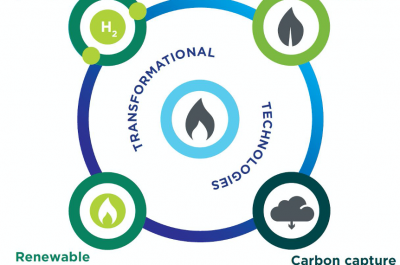AER COVID-19 rule change – working together to ensure customer benefit
The AER has proposed to alter retailer payment terms in the National Electricity Rules. How can we ensure this transfer of cashflow risk from retailers to network businesses promotes the long-term interest of customers?
Urgent retailer rule change
In early May 2020, the Australian Energy Regulator (AER) submitted an urgent rule change request to the Australian Energy Market Commission (AEMC) proposing an extension of retailers’ eligible electricity network bill payment terms from 10 days to 6 months.
The AER is concerned that the COVID-19 pandemic could lead to multiple retailer failures, which it argues the national Retailer of Last Resort Scheme is insufficiently designed to withstand. The AER’s concern stems from fears retailers’ cash flows may be adversely affected as a result of customers’ inability to pay their electricity bills.
Notably, the AER states that the proposed rule is not intended to remove the obligation on retailers to seek payment from customers and that the direct beneficiaries of the proposed rule change are retailers that would effectively obtain a “short-term loan” from network businesses.
The AEMC is considering the AER’s rule change request as an urgent rule change, which only allows for one round of stakeholder consultation on this significant regulatory change during the brief 8-week rule change period.
Targeted and proportionate approach needed
The scheme has been designed to assist retailers rather than electricity customers. The costs resulting from this rule change will, however, ultimately be borne by electricity customers. These costs are strongly contingent on the design and scope of the final rule, and therefore to keep costs manageable, a proportionate and targeted final rule that addresses a demonstrated need is essential.
This was acknowledged in the AER’s proposal, which rightly highlights that further consultation needs to be undertaken to determine whether narrowing the application of the scheme is desirable and appropriate.
Critical to this is the inclusion of retailer eligibility criteria that targets demonstrated needs. The scheme, as proposed, applies to all retailers irrespective of whether they require assistance. However, there does not appear to be an emerging risk of large-scale changed retail patterns of credit risk for large or government-owned retailers. This understanding is reinforced by the current public market postures of major energy retailers.
Providing an undifferentiated level of balance sheet support from network businesses to all retailers is not consistent with an appropriate, targeted or proportionate regulatory policy measure that is in the best interests of customers, who will ultimately bear the costs of any final rule.
It is also notably inconsistent with other Australian government policy responses to the impacts of the COVID-19 pandemic and energy policy measures being implemented by comparable overseas regulatory and market bodies such as Ofgem and the New Zealand Electricity Authority. A common feature of these policies, outlined in Box 1, is that support is provided only to entities that demonstrate a genuine need for assistance.
Box 1: NZ & UK Retailer Support Schemes
Ofgem – UK
- Retailers are ineligible for the scheme if they or any company in their corporate group have an investment grade credit rating.
- Deferred payments incur interest (~8%) to incentivise retailers to only defer as much as is necessary.
- Retailers are expected not to pay dividends or executive bonuses until deferred charges plus interest are repaid.
- The scheme must be proportionately sized so a network’s ability to comply with its financial covenants and credit metrics is not threatened – caps on the scheme are in place.
- A network would cease participating in the scheme if any network entity in a group would breach any of its financial covenants by continuing to provide the scheme.
Electricity Authority – NZ
- Eligibility limited to retailers verified as materially impacted by overdue debt (>25% increase) who cannot access other financial support.
- Retailers capable of drawing on shareholder support or other facilities excluded.
- Independent certification of the financial position of prospective retailers will be required for the NZ EA to confirm retailer eligibility.
Testing the risks and impacts critical
The rule change proposes temporarily altering the existing cashflow and risk allocation arrangements of the electricity supply chain across the market.
The AER rule change proposal as lodged would result in potentially material cashflow and financeability impacts for network businesses.
To produce outcomes consistent with the long-term interests of consumers, any rule must be based on clear empirical evidence that relocating cashflow risks will not cause unmanageable commercial risks to network service providers.
An important part of this analysis is considering the full potential financeability and cash flow impacts and risks of shifting credit events up the energy supply chain to networks. Further, there must be evidence that the costs of this risk relocation do not exceed any potential retail market competition benefits.
Solution needs to address all of the identified problem
In considering the rule change, the AEMC has highlighted that wholesale and network costs together make up almost 80 per cent of retailer costs. If the joint magnitude of these costs is retailers’ potential key payment difficulty, then a rule change that changes the payment terms for network charges but does not address wholesale cost pressures is only solving half the problem. The rule change process should consider options that address the whole issue.
Network businesses will continue to work with governments and regulators to ensure a balanced approach that delivers safe, reliable and affordable electricity to customers as we all work through the challenges of COVID-19. In difficult times, the need to target defined policy problems in a well-considered process that carefully examines the immediate need for, and the consequences of, significant changes to risks is even more necessary.
In the current case, this likely means development of clear eligibility criteria, along with the introduction of public policy transparency measures, to ensure that any final rule is temporary, timely and targeted – promoting the long-term interests of customers.



